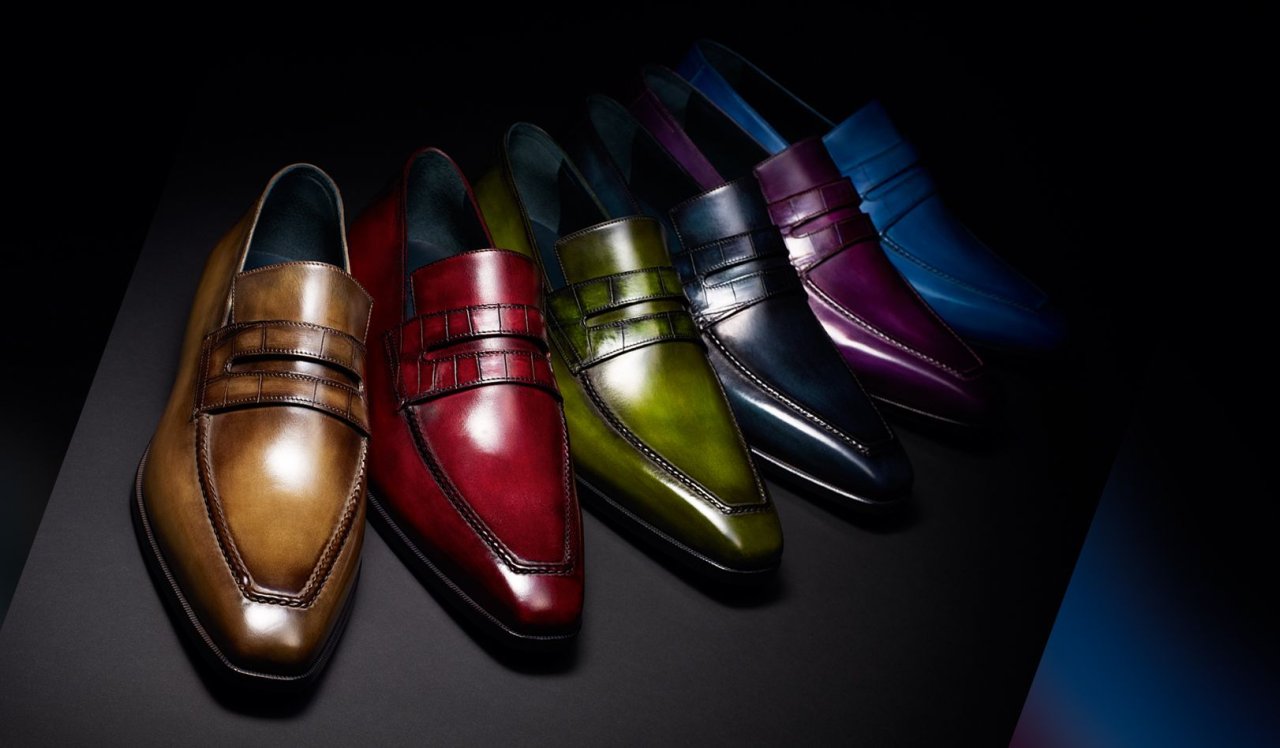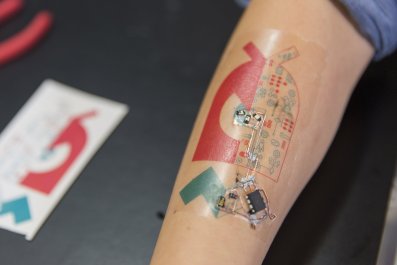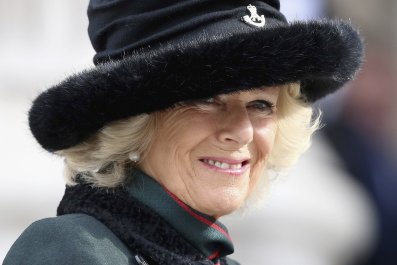In 1962, a pale, shy-seeming man with sunglasses and an excessively floppy fringe crossed the threshold of 26 Rue Marbeuf, the address of Berluti, the fabled Paris-based shoemaker. Celebrating its centenary this year, Berluti was established by a former carpenter from Italy who turned his woodworking skills to good account making the lasts around which shoes were formed. By 1962, the third generation of the Berluti family was running the business.
In those days, Berluti was shoemaker by appointment to the famously fastidious Duke of Windsor and Charles de Gaulle, then the president of France. The establishment that met the needs of the abdicator king and the president of the republic was—just about—willing to also serve less desirable types, such as singers and movie stars Dean Martin and Frank Sinatra, but the staff was unused to seeing young men with silly haircuts, leather jackets and sunglasses walk through the front door. Happily, a gap-toothed young woman of artistic temperament had recently started working at Berluti. Her name was Olga Berluti. She was a cousin of the owner, Tabilio Berluti, and she recognized the withdrawn man behind the fringe and the dark glasses as the artist Andy Warhol.
Under the disapproving gaze of her elders, Olga agreed to design Warhol a pair of shoes, and the following year (making a bespoke pair of shoes is not a rapid business) the square-toed moccasins that the artist had requested was ready. Unhappily—so company lore has it—an unsightly scar in the leather bisected the apron of the shoe, but instead of sending them back to the workshop, Olga told her client a story: "The leather came from a transgressive cow that liked to rub up against the barbed wire." The notion of a transgressive ruminant appealed to Warhol; he declared that henceforth he would wear only shoes made from the leather of transgressive cows.
Warhol's shoe—with its pronounced stitching around the apron, its exaggerated throat and widened slot on the vamp—has remained in production ever since. And although part of me finds it hard to believe that Berluti would let a shoe go into production with a great crease in it, this creation myth has the ring of truth about it, because making a story out of something others would call a defect—indeed making a story out of anything or indeed very little—was one of Olga Berluti's fortes.
She was a sorceress of shoes. These were not just things that one put on one's feet; they were extensions of one's soul, allegories for decoding the mysteries of life. Their special lambent Venezia leather was washed in the lagoon of Venice, and they were best cleaned using vintage Venetian linen and a few drops of vintage Dom Pérignon.
I first met Olga in the early 1990s, before LVMH acquired the brand in 1993. I sat in her shop, bewitched, as she wove tales of how she was designing footwear for the modern warrior and how she left shoes outside at night so that their color would fade and age by the light of the moon. Sunlight, she said, was too harsh. All was going swimmingly until I asked if I could have a poke around the workshops; she was affronted by the suggestion. It was as if I had suggested making the Turin Shroud into cushion covers.
Eventually, we did get along well enough for me to visit her atelier, which she had decorated with the lasts of about 150 dead customers, transforming these wooden stand-ins for an individual's uniquely shaped foot into works of art. The Duke of Windsor's last was festooned with feathers, tartan and coral. And that was the difference with Berluti—the use of color. Before Berluti, men's shoes tended to be black or brown. After Berluti, kingfisher-bright shoes came to adorn men's feet. And the colors were not just solid; these were shoes with subtle variegation and gradation of color. It took a while for these innovations to take off. I believe the first experiments with color were in 1968, but now even many relatively conservative men have embraced shoes with vibrant colors.
Berluti long ago outgrew its single-shop beginnings and since 2011 has been under the creative direction of a delightful man called Alessandro Sartori, who has been charged with the task of turning a shoe shop into a modern gentleman's emporium. "We built up the silhouette from the shoes," he explains, describing how he began creating the sort of clothes that would perfectly match the famous footwear. "You need to see the shoes, so we needed a narrow pant, clean and sharp"—which led him to the natural shoulder line of the jacket and also the acquisition of celebrated Paris tailor Arnys, adding the expertise of two dozen tailors to the company's 35 shoemakers.
While the bespoke garments and shoes are made in Paris, the ready-to-wear shoes and clothes are made in Italy. The color Sartori sees as crucial to the identity of Berluti is common to both collections. "I collect the season's colors, and working with the colorist we study the recipe for each one, and we study them on leather—all the colors need to work for shoes. Only at that point do we translate them into fabrics and yarns."
Thus from shoes to trousers and coats. "We have a perfect match," Sartori says. "Even though you would never wear an outfit in the same color." And it is in the leather jackets and coats that the similarities to the shoes are at their most prominent, because they are treated to the same coloration and patination process as the shoes. "We want a perfect transversal line between all the products," he says.
I think Andy Warhol would have liked what Sartori is doing with Berluti, not least because he was fond of leather jackets. I have suggested to Sartori that he look into making an Andy jacket to complement the Andy shoe. I daresay, however, that had Warhol worn a Berluti blouson he would have been as particular as he was that time he walked into the Berluti shop in 1962, making clear his preference for a transgressive rather than transversal line.





















